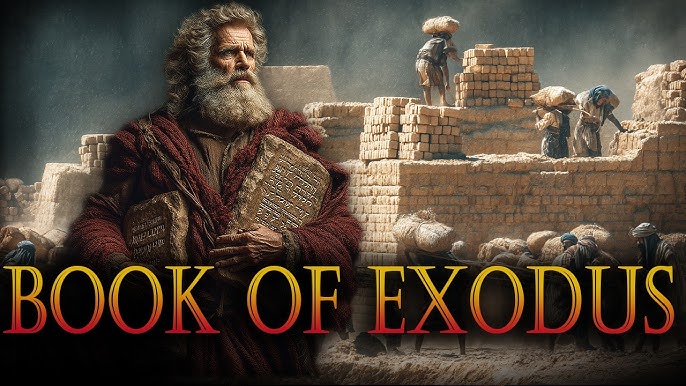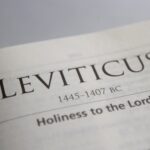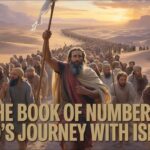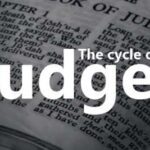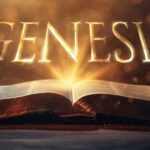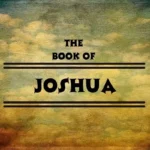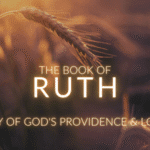The Book of Exodus stands as one of the most powerful, dramatic and foundational narratives in the Bible. It is a story of deliverance, covenant, and divine faithfulness—a narrative that reveals God’s redemptive plan not only for the people of Israel but for all humanity. Often called the “book of redemption,” Exodus the journey of the Israelites from slavery in Egypt to their freedom and covenant relationship with God at Mount Sinai. It is a book about liberation, law, and lasting relationship with the Creator.
Spanning 40 chapters, Exodus isn’t merely historical recounting—it’s a tapestry of divine intervention, human frailty, and unbreakable promises. It answers profound questions: How does God liberate the oppressed? What does true freedom look like under His law? And how does a covenant relationship transform a ragtag group of slaves into a holy nation? From the cries in Goshen to the thunder on Sinai, Exodus reveals a God who hears, acts, and commits.
Overview of the Book of Exodus
The title Exodus comes from the Greek word exodos, meaning “departure” or “going out.” It directly refers to the departure of the Israelites from Egypt, where they had lived in bondage for over four hundred years.
Understanding the Book of Genesis: Creation, Sin, and Redemption
Traditionally attributed to Moses, Exodus is the second book of the Pentateuch (the first five books of the Bible). It connects the story of Genesis—where God promised to bless Abraham’s descendants—with the formation of those descendants into a covenant nation.
Purpose of the Book
Exodus demonstrates that God is faithful to His promises. The God who made a covenant with Abraham now fulfills it by rescuing his descendants, the Israelites, from slavery and establishing them as His chosen people. The book reveals God’s character as Redeemer, Deliverer, and Lawgiver.
Structure of the Book
The Book of Exodus can be divided into three major sections:
- Israel’s Deliverance from Egypt (Chapters 1–18)
- Oppression and slavery in Egypt
- God’s call of Moses
- The ten plagues and the Passover
- The crossing of the Red Sea and journey to Mount Sinai
- The Covenant at Mount Sinai (Chapters 19–24)
- God’s revelation on Mount Sinai
- The giving of the Ten Commandments and other laws
- The formal establishment of the covenant
- The Tabernacle and God’s Presence (Chapters 25–40)
- Instructions for building the Tabernacle
- The sin of the golden calf
- God’s renewed covenant and His dwelling among His people
These three sections together form the theological heart of Exodus—God delivers His people to dwell among them and establish a holy covenant relationship.
The Oppression in Egypt: A Nation’s Cry and God’s Response (Exodus 1-4)
Exodus opens not with fanfare but with forgotten promises. Joseph’s descendants multiply in Egypt, fulfilling Genesis 46:3’s blessing, but a new Pharaoh “who did not know Joseph” enslaves them (Exodus 1:8). Bricks without straw, ruthless taskmasters, and the slaughter of Hebrew boys paint a grim picture of systemic oppression. In their suffering, the Israelites cried out to God, and Scripture says:
“And God heard their groaning, and God remembered his covenant with Abraham, with Isaac, and with Jacob.” – Exodus 2:24 (KJV)
Understanding the Book of Leviticus: Worship and Holiness
This moment marks the turning point of divine intervention—God’s faithfulness to His promises is about to unfold.
Midwives Shiphrah and Puah defy Pharaoh, embodying quiet resistance, while Moses’ mother hides him in the Nile reeds—a basket of hope amid infanticide.
The Call of Moses: From Prince to Shepherd
God chose Moses, a Hebrew raised in Pharaoh’s palace, to lead His people out of Egypt. Moses’ life fractured at 40 when he killed an Egyptian taskmaster and flees to Midian (Exodus 2:11-15). There, he married Zipporah and tended Jethro’s flocks for 40 years, a season of exile forging humility. At the burning bush, God revealed Himself as “I AM THAT I AM” (Exodus 3:14), signifying His eternal existence and unchanging nature. This theophany commissions Moses: “I have surely seen the affliction of my people… and have heard their cry… I have come down to deliver them” (3:7-8). God’s self-disclosure underscores His covenant faithfulness; the God of Abraham hasn’t abandoned His promise.
Moses’ reluctance—”Who am I?” (3:11)—mirrors our insecurities, but God’s assurances include signs (staff to serpent), Aaron as spokesman, and the assurance, “I will be with your mouth” (4:12).
These chapters set the stage: Deliverance begins with divine initiative, not human merit. For today’s readers, it’s a reminder that God hears marginalized cries—from refugees to the overlooked—stirring action through unlikely vessels like Moses.
Confrontation with Pharaoh: The Ten Plagues and Passover (Exodus 5-12)
Moses and Aaron demand freedom: “Let my people go, that they may serve me” (5:1). Pharaoh hardens, increasing burdens, but God’s signs escalate into the ten plagues—a targeted assault on Egypt’s gods and Pharaoh’s hubris. Each plague deconstructs Egyptian idolatry: Nile to blood (Hapi, god of the river), frogs (Heqet, frog-headed fertility), gnats from dust (Geb, earth god), and so on, culminating in darkness (Ra, sun god) and firstborn death (Pharaoh’s claim to divinity).
Understanding the Book of Numbers: Journey and Faithfulness
The Plagues: Judgment and Mercy
When Pharaoh refused to release the Israelites, God sent ten plagues upon Egypt. These plagues were not random disasters; they were judgments against the Egyptian gods, revealing the Lord’s supremacy over all creation.
The plagues included:
- Water turned to blood
- Frogs covering the land
- Gnats or lice
- Flies
- Death of livestock
- Boils
- Hail
- Locusts
- Darkness
- Death of the firstborn
The Passover: Redemption by the Blood
Before the final plague, God instructed the Israelites to sacrifice a lamb without blemish, place its blood on their doorposts, and eat it in haste. That night, the Lord struck down the firstborn of Egypt but “passed over” every house covered by the blood (Exodus 12:1–30).
This event became known as the Passover, symbolizing salvation through substitutionary sacrifice—a foreshadowing of Jesus Christ, the Lamb of God (John 1:29). The Passover signifies that redemption comes through faith in the blood of the Lamb.
The Red Sea Crossing: Freedom from Bondage
As the Israelites fled Egypt, Pharaoh pursued them with his army. Trapped between the Red Sea and Pharaoh’s forces, the Israelites panicked. But Moses declared:
“Fear ye not, stand still, and see the salvation of the Lord.” – Exodus 14:13 (KJV)
God parted the waters of the Red Sea, allowing the Israelites to cross on dry ground. When the Egyptians followed, the waters returned, destroying Pharaoh’s army. This miraculous deliverance demonstrated God’s ultimate power over oppression and His faithfulness to save His people.
The Covenant at Mount Sinai: God’s Law and Presence
After their escape, the Israelites journeyed to Mount Sinai, where they would experience one of the most important moments in biblical history—the establishment of the Mosaic Covenant.
Understanding the Book of Deuteronomy: Law and Covenant Renewal
a. God’s Revelation at Sinai: At Mount Sinai, God descended in fire, smoke, and thunder. His presence filled the mountain as He revealed Himself to His chosen people (Exodus 19:16–20). Here, God gave Israel the Ten Commandments, laws that expressed His moral standards and covenant expectations.
“And God spake all these words, saying, I am the Lord thy God, which have brought thee out of the land of Egypt.” – Exodus 20:1–2 (KJV)
This covenant was not merely a set of rules—it was a relationship based on divine love and holiness. God declared that Israel would be His “kingdom of priests and a holy nation” (Exodus 19:6).
b. The Ten Commandments: Moral Foundation of the Covenant: The Ten Commandments can be summarized in two categories:
- Duty to God: No other gods, no idols, reverence for God’s name, and keeping the Sabbath holy.
- Duty to Others: Honor parents, do not kill, commit adultery, steal, bear false witness, or covet.
These laws formed the foundation of God’s moral order, teaching humanity to live in righteousness, love, and respect for both God and neighbor.
c. Covenant Ratification: In Exodus 24, Moses read the Book of the Covenant to the people, who responded, “All that the Lord hath said will we do, and be obedient.” (Exodus 24:7). Moses then sprinkled blood on the altar and the people, signifying the sealing of the covenant by blood.
This moment officially established Israel as God’s covenant nation, bound by divine law and grace.
The Tabernacle: God Dwelling Among His People
One of the most beautiful aspects of Exodus is God’s desire to dwell among His people. He instructed Moses to build the Tabernacle, a portable sanctuary where His presence would reside (Exodus 25–31).
“And let them make me a sanctuary; that I may dwell among them.” – Exodus 25:8 (KJV)
The Tabernacle’s design symbolized God’s holiness, order, and accessibility through mediation. Its key elements—the Ark of the Covenant, altar of sacrifice, lampstand, and veil—each pointed to the redemptive work of Jesus Christ.
Understanding the Book of Joshua: Conquest and Faith
The Golden Calf: Rebellion and Renewal
While Moses was on Mount Sinai receiving instructions, the Israelites grew impatient and made a golden calf, worshiping it as their god (Exodus 32). Their idolatry provoked God’s anger, threatening to destroy them. But Moses interceded on their behalf, and God showed mercy.
This episode revealed humanity’s tendency toward rebellion and the need for intercession and grace. After repentance, God renewed His covenant and allowed His presence to return to the people, symbolized by the cloud of glory that filled the Tabernacle (Exodus 40:34–38).
Major Themes in the Book of Exodus
a. Deliverance through Divine Power: Exodus portrays God as the ultimate Deliverer who rescues His people from oppression. This deliverance foreshadows the spiritual liberation believers experience through Christ.
b. Covenant Relationship: The covenant at Sinai emphasizes that redemption is not only about freedom from slavery but also about entering into a holy relationship with God.
c. God’s Presence: The Tabernacle represents God’s desire to dwell among His people—a theme fulfilled in the New Testament when Jesus became “Emmanuel, God with us” (Matthew 1:23).
d. Law and Grace: While the law reveals God’s holiness and human sinfulness, grace provides the means of forgiveness and fellowship with Him.
e. Leadership and Obedience: Moses’ leadership shows that obedience, faith, and humility are essential for those called to serve God’s purpose.
Lessons from Exodus for Believers Today
- God Hears the Cry of the Oppressed: Just as He heard Israel’s groaning, God listens to the cries of those in distress today.
- Faith Requires Obedience: Deliverance is followed by a call to live according to God’s commandments.
- Worship is Central: The Tabernacle reminds believers that worship is at the heart of a covenant relationship with God.
- God’s Presence Brings Guidance: The cloud and fire that guided Israel symbolize the Holy Spirit’s leading in the life of believers.
- Redemption is Through the Blood: The Passover lamb foreshadows salvation through the blood of Jesus Christ.
Understanding the Book of Judges: Leadership and Cycles
The Relevance of Exodus Today
Exodus is not just ancient history—it speaks powerfully to modern believers. It reminds us that God delivers His people from all forms of bondage, whether spiritual, emotional, or physical. The story of Exodus is the story of God’s unchanging love and faithfulness, showing that He rescues, redeems, and restores those who trust in Him.
Through Christ, the ultimate Deliverer, we too experience an Exodus from sin and death into the freedom of God’s covenant grace.
Conclusion: From Slavery to Sonship
The Book of Exodus is a profound revelation of God’s plan for humanity. It begins with slavery and ends with God’s presence dwelling among His people—a journey from oppression to communion.
Through the themes of deliverance and covenant, Exodus shows that God not only rescues His people but also calls them into relationship with Him. The physical deliverance from Egypt mirrors the spiritual deliverance believers receive through Jesus Christ.
Just as God told Moses, “I have surely seen the affliction of my people… and I am come down to deliver them” (Exodus 3:7–8), He continues to deliver those who call upon His name today.
Understanding the Book of Ruth: Loyalty and Providence
Exodus, therefore, is a timeless testimony that God is our Deliverer, the covenant-keeping God, and the One who dwells among His redeemed people.
Last modified: October 30, 2025
